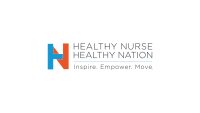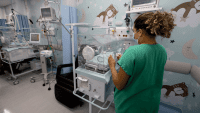“The effect of one upright individual is incalculable.”
— Oscar Arias, Nobel Peace Laureate
During the dark days when Nazi death camps polluted Europe, there lived a small group of heroes who have come to be known as “the rescuers.” In the mid-1960s, psychologist Perry London began studying them. His initial premise was that rescuers “had…the desire to help, but also a desire to participate in…exciting activities.” However, his study, The Rescuer Project, found that a taste for adventure, not excitement, enabled rescuers to confront life-and-death situations.
London also hypothesized that most rescuers identified strongly with a parent who was “not necessarily religious but [held] very firm opinions on moral issues and served as a model of moral conduct.” This premise held true: 80% of rescuers in his study had an altruistic role model in childhood. Moreover, their parents instilled in them the importance of helping others when they enlisted the youngsters’ hands-on assistance in altruistic activities. Rescuers were raised by loving, empathic parents who taught them concern for others.
London’s final premise, that rescuers were marginalized, is not supported by the data. Rescuers scored very high on scales measuring their level of bonding within both the family and society. They were not marginalized; instead, they were secure enough to act on the basis of their principles. Actually, it didn’t matter whether rescuers felt marginalized. What counted was their sense of independence—and being asked for help. Both the Altruistic Personality Project study and the Rescuer Project found that few rescuers initiated the rescuing relationship; rather, they were asked. Also, many increased the risks they took by small increments, beginning by smuggling food into the ghetto and ending up sheltering Jews in their homes.
In her paper “Can the few become the many? Some Catholics in France who saved Jews during the Holocaust,” Eva Fleischner talks about one rescuer, her friend Germaine Ribiere. The two were walking down a Paris street when Germaine suddenly stopped and said, “I’m worried about that little girl.” Germaine thought a child they saw on the street might have lost her mother. Fleischner recalled, “I had noticed, vaguely, a little girl in front of us, but I had not really seen her. Germaine had seen, and worried.…She is Germaine Ribiere because she notices a little girl who may be lost and in need of her help…just as the Jews needed help during the war.”
Everyone who studies rescuers agrees on one thing: If we instruct our children to value all human life, empathize with people in distress, and tolerate differences among people, we can create a society in which an Auschwitz is unthinkable. It’s vital to instill in children “habits of virtue” and to promote consistency among belief, self-perception, and behavior. These simple lessons for moral education are no less striking for their lack of novelty.
Each of us is a teacher. The examples we set, the choices we make, and the lives we live send important messages to those around us, especially the young ones. We cannot avoid responsibility for the moral climate we create in our actions and motives, seeding the next generation of morals with the ones we choose to model today.
In these days when money and politics are dominating the healthcare professions, it’s more important than ever that we professionals pay close attention to what we teach. Management, above all, creates the moral climate of an organization; that may be its single most important function.
And more than anyone else, the staff nurse creates the climate in which patients live and die; that may be the nurse’s single most important function. If young nurses and physicians aren’t getting the message of compassion, perhaps it’s because we’re not sending it.
Leah Curtin, RN, ScD(h), FAAN
Executive Editor, Professional Outreach
American Nurse Today
Visit www.AmericanNurseToday.com/Archives.aspx for a list of selected references.
Dr. Leah Curtin, RN, ScD (h), FAAN, is Executive Editor, Professional Outreach, American Nurse Today. An internationally recognized nurse leader, ethicist, speaker, and consultant, she is a strong advocate for both the nursing profession and high-quality patient care. Currently she is Clinical Professor of Nursing at the University of Cincinnati College of Nursing and Health. For over 20 years, she was the Editor-in-Chief of Nursing Management. In 2007, she was appointed to the Standards and Appeals Board of DNV Healthcare, a new Medicare accrediting authority. Dr. Curtin can be reached at LCurtin@healthcommedia.com.
Disclaimer: The views and opinions expressed in this article are those of the author and do not necessarily reflect the opinions or recommendations of the ANA or the staff or Editorial Advisory Board of American Nurse Today. Visit myamericannurse.com/SendLetterstoEditor.aspx to comment on this article.

















